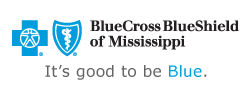Healthy Lifestyle Tips to Manage Blood Pressure
High blood pressure can often be prevented and managed without taking medication. Simple lifestyle changes can be most effective at lowering your blood pressure and keeping it under control.
- 30 minutes of moderate-intensity physical activity most days of the week, like walking.
- Eating a healthy diet, including fresh fruits and vegetables, whole grains and lean protein. Here are some examples of foods that are lower in sodium as well as a 1-day meal plan lower in sodium. Here are some additional tips for lowering sodium in your diet.
- Quitting tobacco.
- Limiting alcohol consumption (no more than 2 drinks per day for men and no more than 1 for women).
- Limiting excess sodium in your diet (fast food, snack foods, canned soups and processed foods).
- Establishing and/or maintaining a healthy weight. You should aim for a Body Mass Index of 18.5-24.9. You can calculate your Body Mass Index at https://www.nhlbi.nih.gov.
- Having your blood pressure checked regularly.
Resources:
To learn more about hypertension, you can visit the Centers for Disease Control and Prevention, the American Heart Association, or the National Heart, Lung & Blood Institute.
The National Heart, Lung, & Blood Institute has published a guide on lowering your blood pressure using the DASH eating plan. Click here to download a copy of the guide.
Manage Your Blood Pressure with a Healthy Lifestyle
Managing your blood pressure is an important part of being healthy and staying healthy. Learn how healthy lifestyle habits like eating a low-sodium diet, exercising regularly and avoiding tobacco use can help you manage your blood pressure.
Eat Healthy with DASH
The DASH (Dietary Approaches to Stop Hypertension) diet is often recommended for someone with high blood pressure since it's lower in sodium and higher in nutrients that help reduce blood pressure like potassium, calcium and magnesium. The standard DASH eating plan recommends 2,300 mg or less sodium per day. The lower sodium DASH plan reduces that amount to 1,500 mg or less sodium per day. Following DASH recommendations can even lower blood pressure by a few points in as little as two weeks. The DASH diet focuses on whole grains, fruits and vegetables, low-fat dairy and lean meat. It also recommends small amounts of nuts, seeds and legumes, healthy fats and oils. Sweets, alcohol and caffeine should be limited. Here's a look at what's included in the DASH eating plan:
Grains (6-8 servings per day) Focus on whole grains since they are higher in fiber and other nutrients. An example of one serving of grains includes a slice of whole wheat bread, 1 ounce of dry cereal or 1/2 cup cooked cereal, brown rice or whole wheat pasta.
Vegetables (4-5 servings per day) Tomatoes, carrots, broccoli, sweet potatoes and other greens are high in fiber, vitamins, potassium and magnesium, which are effective in lowering blood pressure. One serving equals 1 cup of raw, leafy greens or 1/2 cup raw or chopped veggies.
Dairy (2-3 servings per day) Low-fat or fat-free milk, yogurt or cheese is a good source calcium, vitamin D and protein. One serving is equal to 8 ounces of skim milk, 6-8 ounces of yogurt or 1.5 ounces of cheese.
Lean meat, poultry and fish (6 or fewer servings per day) While lean meat, fish and poultry can be an important element in your diet, they can still contain fat and cholesterol. Ideally, no more than 25 percent of your plate should be lean protein. An example of a serving size of lean protein is 1 ounce of skinless poultry, seafood or lean meat, 1 egg or 1 ounce water-packed low-sodium tuna.
Nuts, seeds and legumes (4-5 servings per week) Almonds, seeds, kidney beans, peas, lentils and others in this family of food are good sources of magnesium, potassium, protein, fiber and other nutrients which are healthy and can protect against some diseases. Keep serving sizes small since nuts and seeds are higher in fat and calories. A serving is equal to 2 tablespoons of seeds, 1/3 cup of nuts or 1/2 cup cooked beans or peas.
Fats and oils (2-3 servings per day) Healthy fats enable your body to absorb nutrients, but too much fat adds excess calories. One serving is equal to 1 teaspoon of soft tub margarine, 1 tablespoon of low-fat mayo or 2 tablespoons light salad dressing.
Sweets (5 or fewer per week) Eat sweets sparingly since there is no nutritional value and they add a lot of extra calories. Try those which are lower in sugar. An example of a sweet serving is 1 tablespoon sugar, jelly or jam, 1/2 cup sherbet or sorbet.
Exercise Regularly
Regular exercise can be extremely effective in lowering blood pressure. Physical activity makes your heart stronger and more efficient at pumping blood. If your heart doesn't have to work as hard, the force on your arteries decreases which lowers your blood pressure. Regular physical activity can lower your systolic (top number) blood pressure by 5 to 10 points. That's about the same as what some blood pressure medications can achieve!
To lower your blood pressure and keep it lowered, you need to start exercising and keep exercising. It can take a person 1-3 months to see a difference. And if you stop exercising, the benefits are likely to be discontinued.
Start with at least 30 minutes of moderate-intensity physical activity on most days of the week. This can include brisk walking, swimming or climbing stairs. If you can't commit to an entire 30-minute session, you can even break it up into three 10-minute or two 15-minute sessions.
Avoid Tobacco
Tobacco use raises your blood pressure and affects your overall cardiovascular health. If you use tobacco, it's important that you take steps to quit. Learn more about the health benefits of quitting and find resources to help you quit in the "be tobacco-free" section of our website.
Getting started with your lifestyle plan can be easy. Take small steps to increase your chances of success. Make one or two changes at a time, like making half of your grains whole grains rather than all at once. Increasing your fruit and vegetable consumption gradually can also help you adjust your palate. Also, gradually begin an exercise routine if it's your first time and be sure to get the O.K. from your Network Provider, especially if you have any health limitations. Be sure to work closely with your Network Provider to monitor your progress. If he or she determines you need a medication to manage your blood pressure, be sure to ask for a generic. By following these healthy lifestyle tips you are taking important steps to achieving and maintaining a healthy blood pressure.




 Women's Health
Women's Health Eat Healthy
Eat Healthy Exercise
Exercise Health & Wellness Articles
Health & Wellness Articles